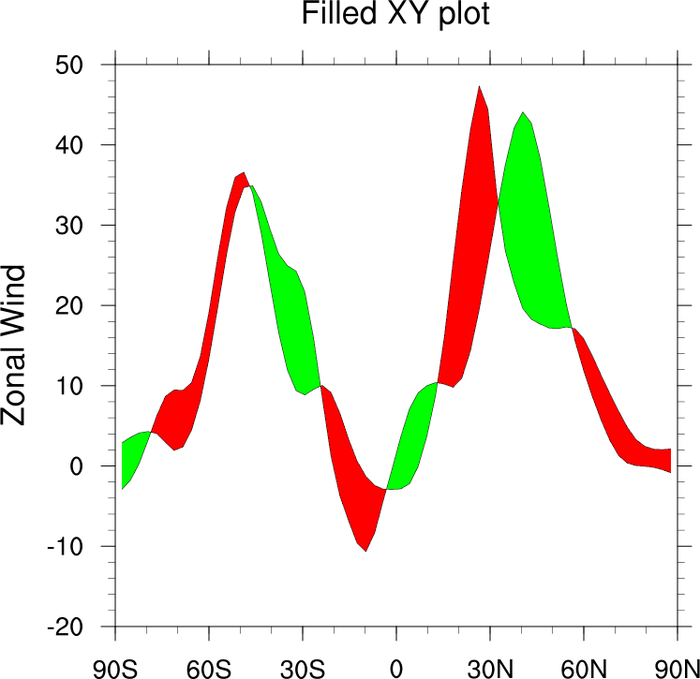- Your 4.3 homework is not graded yet: graded 12, 14, 21.
- I've assigned 4.4 homework for next Monday, and 4.5 for next Wednesday.
- Your exam revisions are also due on Wednesday. Sorry to keep you so busy, but we're in the home stretch!
This is our last technique of integration. Then we end the semester with some applications of integration.
- The substitution rule is the chain rule backwards.
Every differentiation rule is written backwards to create an integration rule. Substitution is the flip side of the chain rule.
- Q: What is the derivative of $\sin(x^3)$?
- A: $\int{\cos(x^3)3x^2dx}=\sin(x^3)+C$
That's a funny answer, but it suggests the general idea (but for a specific example). If we let
$h(x)=\sin(x)$ and
$g(x)=x^3$ then we can generalize this:
- Q: What is the derivative of $h(g(x))$?
- A: $\int{h'(g(x))g'(x)dx}=h(g(x))+C$
So, in terms of a definite integral, the rule is that
$h(g(b))-h(g(a))=\int_{a}^{b}h'(g(x))g'(x)dx$ and, even better, let $u=g(x)$; then
$\frac{du}{dx}=g'(x)$ or $du=g'(x)dx$,
so
$h(g(b))-h(g(a))=\int_{a}^{b}h'(g(x))g'(x)dx=\int_{g(a)}^{g(b)}h'(u)du$ We re-express an integral in $x$ in terms of a variable $u$. Sometimes this method is called "u-substitution", in honor of our favorite substitution variable.
Forgetting for a moment that we might know how to solve this!;), we can always do the change of variables
$\int_{a}^{b}f(g(x))g'(x)dx=\int_{g(a)}^{g(b)}f(u)du$ and hope that the integral on the right is easier to solve (certainly less cluttered). Notice especially the change in the limits on the integral.
Writing it in this last way may be mysterious, because of the change of variable to u (and the change in the limits); but it's the disappearance of g'(x) that's really curious. It falls right out of the change of variables, however:
$u=g(x)\Longrightarrow\frac{du}{dx}=g'(x)$ Solving for du, we get$du=g'(x)dx$ and hence that piece of the integrand disappears.The trick generally is to recognize the presence of a "chain-rule derivative" in the integrand -- that is a product that one can think of as $h'(g(x))g'(x)$.
Indefinite integrals are a little simpler to think about: we might think of them this way: \[ \int f(g(x))g'(x)dx = \int f(u)du = F(u) + C = F(g(x)) + C \]
- Q: What is the derivative of $\sin(x^3)$?
- Examples:
- #2, p. 335
- #5
- #8
- #19
- #38
- #55
- Now we'll look at several applications of integration: why are integrals
so important?
I'll start with one of my favorite applications, however: let's think about those signs you see on the highway, that tell you the time to this or that road, or this or that exit.
How do they know how long it's going to take you today?
An engineer with an integral (and some sensors) can tell you! Let's think about how.
- Today's new topic: Section 5.1: the area between curves
There's no great shakes here. In our introduction to the integral, we've begun by thinking of a definite integral as representing a signed area, between a curve and the x-axis. Now suppose that we want the area between two curves?

If one curve is always above the other, then we simply subtract the smaller area from the larger:

If the top curve is the graph of $f(x)$, and the bottom curve is the graph of $g(x)$, then the difference in the areas, which is what we want (in blue), is
$I=\int_{a}^{b}f(x)dx-\int_{a}^{b}g(x)dx = \int_{a}^{b}(f(x)-g(x))dx$ Let's do some examples.
There are a couple of tricks here:
- One is to figure out what to do when two curves cross:

In this case, the sign of the area changes as
and
change roles (which one is above, which below). If we want the actual geometric area, and not the signed area, then we can use this formula:
$I = \int_{a}^{b}\left|f(x)-g(x)\right|dx$ - The other trick is integrating along the y-axis, rather than
along the x-axis.

- #2, p. 349
- #3
- #6
- #17 (switch roles!)
- #31
- #41
- #45
- #46
- One is to figure out what to do when two curves cross: